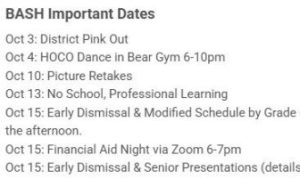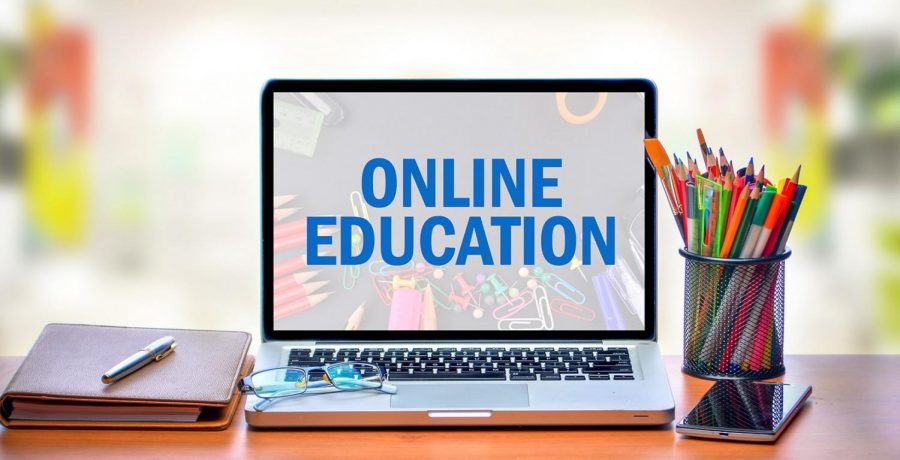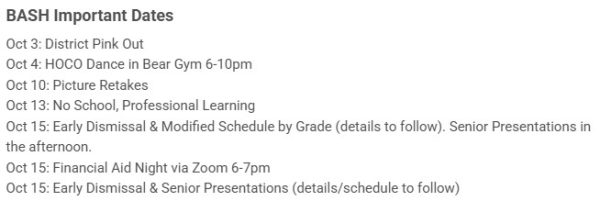Online learning creates mixed feelings at BASH
Following the Covid-19 shutdown in March, schools across the world have been struggling to find a sufficient way to maintain the education of their students. After six long months and several school board meetings and votes, Boyertown settled on virtual education. This new setup began on August 31st, and is set to change to a Hybrid system on October 5th.
There are many of mixed feelings about the new adjustments for students and teachers alike. BASH Senior Angelique Bauer stated “Virtual learning allows for more flexibility when it’s asynchronous learning, but synchronous learning feels redundant and it’s very hard to focus on. It doesn’t feel like real school.”
Many students agree with her. Fellow Senior Theano Charitos expressed her concerns for virtual learning as well. “Virtual learning is frustrating and redundant. It induces terrible headaches and is killing my eyes. The computer problems don’t help either.”
Many students are facing different issues with the virtual learning, as hands on classes tackle the struggles of converting to virtual work.
“For my hands-on learning classes, like architecture or any of the woodworking classes are almost impossible to do from home, so we just get random filler activities until they can figure out how to actually do everything without the proper materials.” Charitos states.
While most students aren’t a fan of the situation, many are understanding that everyone is struggling to figure things out right now. Senior Ally Bowman stated that although she feels she isn’t learning much, she understands that it must be difficult to have to relearn how to teach the curriculum, and that teachers are struggling as well.
For many teachers it is a struggle. Art teacher Mrs. Vogels stated that there are definitely positives and negatives to this setup, however creating lessons has become more difficult. “It’s been kind of like reinventing the wheel.” Vogels told The Cub. “As an art department, we do not have enough supplies to give every student their own, so we’ve really needed to get creative with our approach.” Vogels also mentioned that she likes that with virtual learning she can see all her students’ faces, since often during in-person classes, eye-contact can be difficult.
A survey was taken to grasp an accurate representation of BASH’s opinion on virtual learning. 331 Students were surveyed across the four grades: 118 Freshmen, 75 Sophomores, 64 Juniors, and 74 Seniors. When asked if they enjoyed online learning, 207 students (62.5%) said no, and 124 students (37.5%) said yes. There was a variation within the responses as to why students felt the way they did. Many students felt that that virtual learning was a difficult way to learn, or that they didn’t have a great environment for focus. Another big concern for students has been the immense technology issues. Many of these technology issues come from internet problems, while other issues come from the technology itself.
One respondent mentioned, “The Chromebooks are slow and glitchy sometimes, and it has a hard time functioning well if I have a zoom and multiple tabs open.” Other students are also concerned with the lack of separation between school and home. One respondent stated, “It becomes harder and harder to separate the feeling of stress and work associated with school with the relaxation that should come from being in your own home.”
Students also found the lack of communication and socialization to be a problem for them. A big part of learning for some is the social aspect, the ability to work face to face and ask questions to someone right in front of you, an aspect that is extremely difficult to capture through virtual learning.
While the majority viewed virtual learning in a negative light, there were still many students who felt positively on the topic. Many of these respondents felt that the flexibility with classes and teachers was a very good thing to come of this adjustment. A lot of students feel that the virtual learning provides them with a way to work at their own pace, while others really enjoy the newfound ability to sleep in.
Opinions on this matter were far from cut and dry, as many students found themselves in the middle. These students understood that their were pros and cons to both options, and while it may not be ideal, it is what is available at this time. One student expressed that “I would rather be in person but with the Covid conditions I feel as if it is not safe, but I don’t like online because I’m not in a controlled environment and I’m afraid of failing.” Many students who found themselves stuck in between a positive and negative viewpoint understood the necessity, but were unhappy with the outcome.
“Online learning is a challenge, but I am really grateful that I can still learn even if it is not in a classroom. Through virtual school, I am more ensured that I am safe rather than going to school where the risk is greater due to more people.” One respondent stated.
Online learning is a struggle for everyone, and while the situation may not be ideal, it is a challenge we are all working to overcome. Patience is key to getting back to normal as quickly and safely as possible.






















